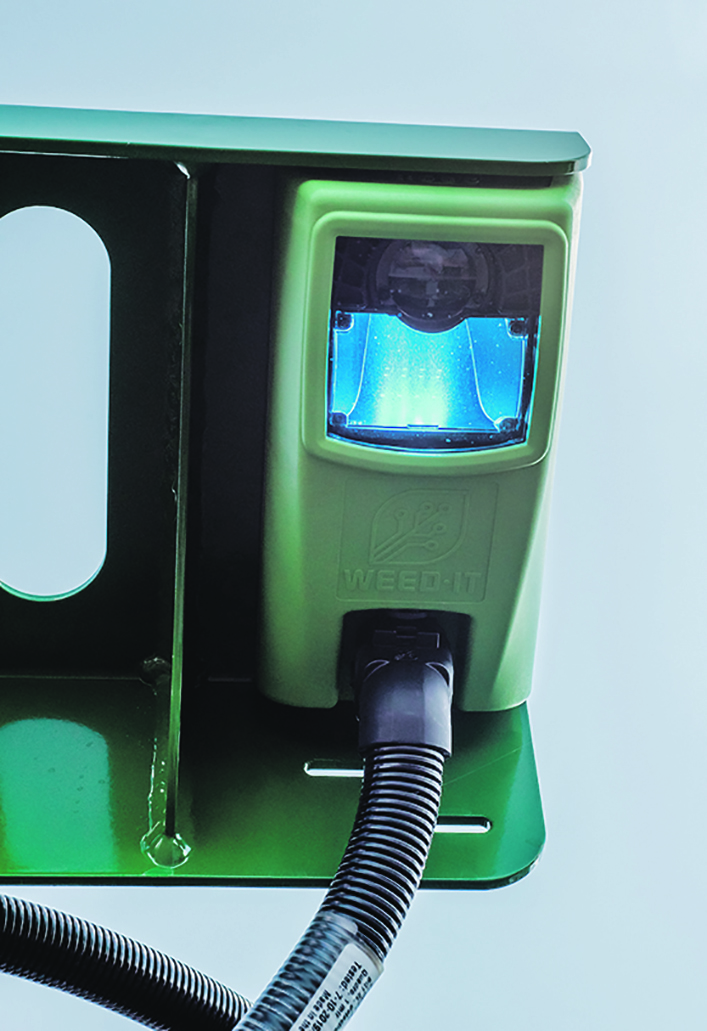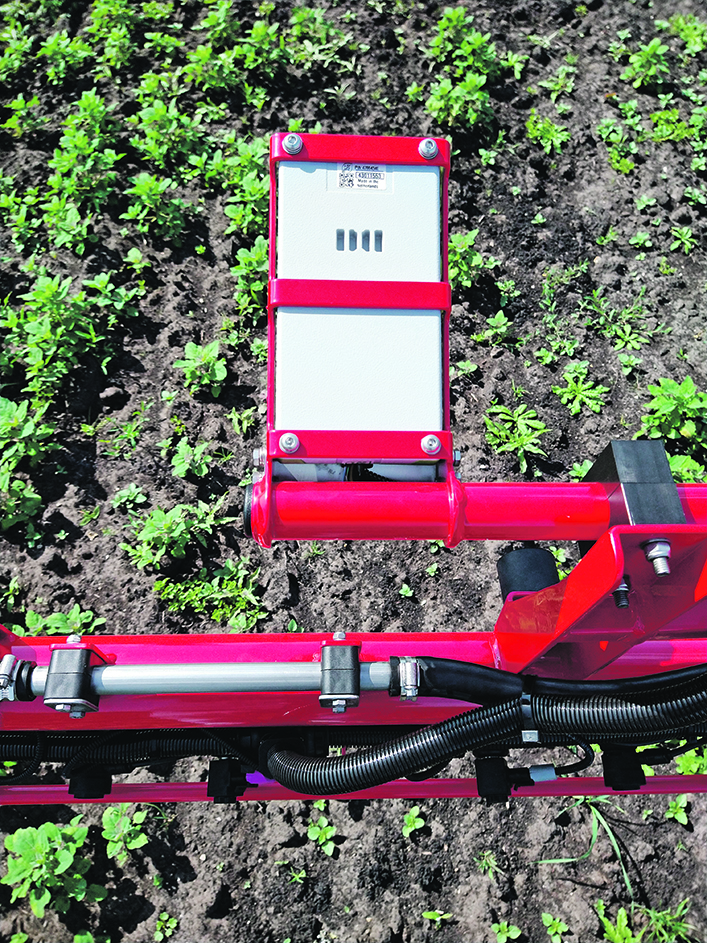The idea of spot spraying individual weeds has been around for a while. The first commercial unit to hit the Canadian Prairies was the Australian-built WeedSeeker about 20 years ago.
WeedSeeker recognized green foliage against a brown or black background. It was good at reducing herbicide volumes in black summerfallow, but it arrived on our shores just as western Canadian farmers were turning their back on black fallow. WeedSeeker wasn’t a big hit.
But it stirred up a lot of interest in spot spraying. It was obvious that the concept could reduce the amount of chemical to be sprayed. This had financial benefits, environmental benefits plus it could be a major weapon in the fight against herbicide resistant weeds.
Taking it one giant step forward, GreenSeeker, the nitrogen-sensing system sold by Pattison Liquid in Lemberg, Sask., works by measuring chlorophyll in the foliage. That same chlorophyll recognition technology is the basis for all green-on-green weed identification systems so far.
WeedIt — This spot spray technology was developed beginning in 1999 in the Netherlands. Dutch company Agrifac, which also owns Apache and four other large sprayer manufacturers. Agrifac worked with the spot spray technology and now uses this sensor system that not only identifies green-on-brown, but also discerns green-on-green in some situations.
WeedIt uses fluorescent light to identify living green organic material. It measures the degree of reflection of plants in certain light wavelengths, making it possible to work around the clock with a good hit ratio.

In Western Canada, this system is sold by Croplands Equipment in Calgary. Cropland’s Jesper Voois says in the short time they’ve carried WeedIt, they have already delivered seven units and taken orders for five more.
Voois says WeedIt is typically installed on a Millennium boom, designed and built by Specialty Enterprises in Wisconsin. Specialty is the largest manufacturer of aluminum booms in North America.
This boom was engineered for the WeedIt sensors when North American importers felt the original Agrifac boom didn’t provide adequate protection for the sensors. So now, WeedIt electronic equipment arrives from Europe and is installed on the Wisconsin-built booms in Calgary. He adds that WeedIt and Millennium can be installed on any sprayer.
Voois says that WeedIt sensors scan the field surface about 7,000 times per second, measuring chlorophyll. Every millimeter is sampled when spraying at 16 miles per hour. The nozzle is not actuated through a pulse-width-modulation table until a weed is spotted.
“When making major cutbacks in chemical, it becomes more affordable to use high-end chemicals to fight weed resistance,” says Voois, explaining that spot spraying is the biggest tool in fighting resistance.
“Higher doses in conjunction with more effective chemicals reduces the seed bank over time. WeedIt can pick out large weeds in a young crop. If weeds have a good head start, their light reflectance will be different from that of a newly emerged plant. There will be significant savings in water and time on the number of refills of the sprayer. The amount of chemical residue in the soil is reduced, which is beneficial for your crops.”
Voois says WeedIt has a number of fits. In all scenarios, it reduces chemical volumes by only spraying living plants:
- it applies pre-seeding burndown at the start of a growing season
- it’s used for post-harvest weed control
- applying desiccant, it evens out patches of immature crops
- it’s used to apply a pre-harvest herbicide to control weed patches
- just as a new crop emerges, WeedIt can discern the difference in chlorophyll levels between an established weed and a new plant. It then sprays only the larger weed.
“We did trials here in Canada with grassy weeds in a young canola crop, and that went very well,” Voois says.
“We’ve sold the WeedIt with the 120-foot boom and the 135-foot boom. For the WeedIt technology only, the price is $180,000. At that price, we figure the return on investment is very good for a farm 5,000 acres to 10,000 acres. With the boom included it’s $270,000. But there’s a federal rebate program that can pay up to $48,000.”
Agrifac announced this summer they are adding WEED-IT to the Condor and Condor Endurance field sprayers.
Exel Industries recently established a new company called Exxact Robotics to push forward green-on-green spot spraying. They’re serious about “the right dose, in the right place, at the right time”.
Their 3S spot spray sensor technology targets weeds by visually recognizing them. Inputs might be reduced by as much as 80 percent. But the technology stretches far beyond herbicide replacement.
Exxact has developed technology to collect and analyze images in real time through artificial intelligence. It detects not only weeds, but also other biological aggressors, such as disease and insects.

It can also determine nutritional needs of the crop. 3S on-board sensors allow instant data acquisition and real time analysis. The information is sent to the sprayer control, which delivers the right dose to the right place.
Located in Paris, Bérangère Mori is the senior consultant at Exxact Robotics. In an email conversation, he says 3S differs a lot from WeedIt and has been mounted on Agrifac and Hardi sprayers for a while.
“3S includes a specific camera design and image analysis enabling work on main crops like wheat, corn, soybean, sunflower and rapeseed. It will be available on sprayer brands belonging to EXEL Industries including Agrifac, Apache, Hardi, Berthoud, Tecnoma and Evrard.
“For low density work, one 3S sensor is installed every three metres. For high density work, one 3S sensor is installed every one metre. This provides optimal precision and better management of shadows in row crops.”


















